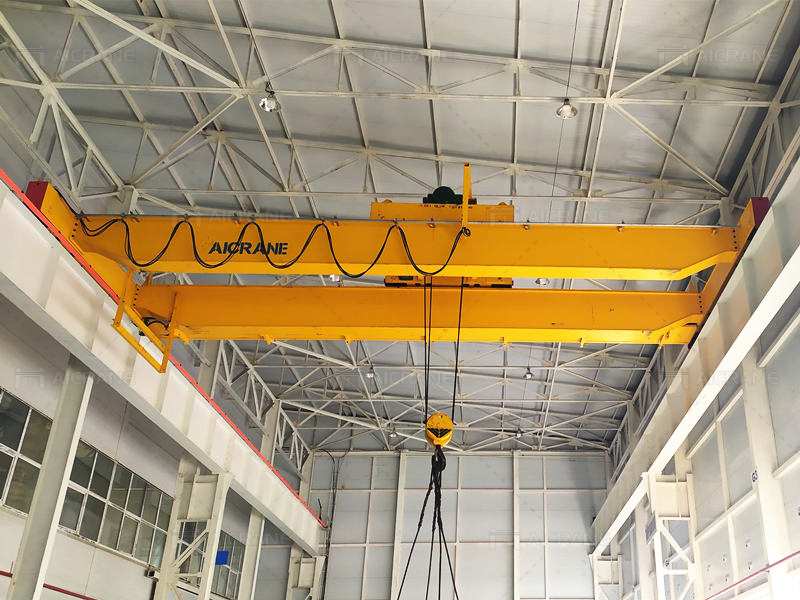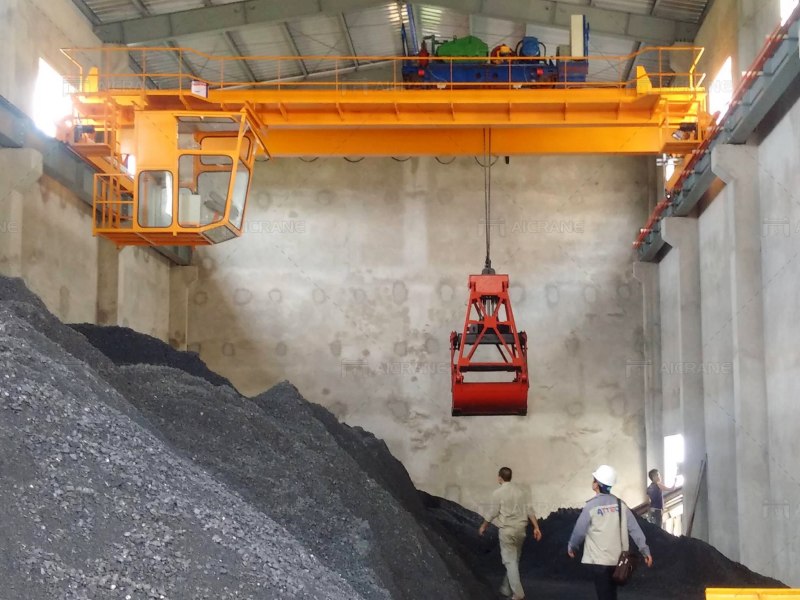Double bridge cranes, also known as double girder overhead cranes, are essential pieces of equipment in heavy-duty lifting applications. They are renowned for their durability and capability to handle substantial loads with precision and efficiency. However, to ensure their continued performance and safety, regular maintenance and attention to durability are crucial. This article explores the key aspects of maintaining and enhancing the durability of double bridge cranes, ensuring they remain in optimal condition throughout their service life.
Understanding Double Bridge Cranes
Double bridge cranes are distinguished by their two parallel girders which support the crane’s hoist and trolley system. These cranes are commonly used in industrial environments such as manufacturing plants, warehouses, and shipping yards where they handle heavy loads and operate over long spans. Their robust design allows them to lift and move large and heavy items efficiently, making them indispensable in many industries.

Importance of Durability in Double Bridge Cranes
The durability of a double bridge crane is crucial for several reasons:
- Load Capacity: Double bridge cranes are designed to handle large and heavy loads. Their durability ensures that they can safely lift and transport these loads without compromising the structural integrity of the crane or the safety of the operation.
- Operational Efficiency: A durable overhead crane maintains its performance over time, minimizing downtime and maximizing productivity. Regular maintenance helps prevent unexpected breakdowns and ensures that the crane operates smoothly and efficiently.
- Safety: Durability directly impacts safety. Well-maintained cranes are less likely to experience failures or malfunctions that could pose risks to operators and other personnel. Ensuring the crane remains in top condition helps prevent accidents and ensures a safe working environment.
Key Aspects of Maintaining Double Bridge Cranes
- Regular Inspections and Monitoring
Routine inspections and monitoring are essential for identifying potential issues before they become serious problems.
- Visual Inspections: Regular visual inspections should be conducted to check for any signs of wear, damage, or misalignment in the crane’s components. Look for cracks in the girders, wear on the wheels, and any unusual noises or vibrations during operation.
- Structural Integrity: Inspect the structural components of the crane, including the girders, supports, and connections. Ensure that all welds and bolts are intact and that there are no signs of deformation or corrosion.
- Load Testing: Periodic load testing should be carried out to verify that the crane can handle its rated capacity safely. This testing helps ensure that the crane’s lifting and hoisting mechanisms are functioning correctly and can handle the intended loads.
-
Lubrication and Mechanical Maintenance
Proper lubrication and mechanical maintenance are critical for ensuring the smooth operation of the crane’s moving parts. Double bridge cranes always adopt top running crane style to handle heavy loads.
- Lubrication: Regularly lubricate all moving parts, including bearings, gears, and hoist chains. Proper lubrication reduces friction and wear, extends the life of components, and ensures smooth operation.
- Checking Mechanical Systems: Inspect and maintain the crane’s mechanical systems, such as the drive units, gearboxes, and hoisting mechanisms. Replace worn or damaged components promptly to prevent further damage and ensure reliable performance.
- Brake Systems: The crane’s brake systems are vital for safe operation. Regularly check and adjust the brakes to ensure they are functioning correctly. Replace brake pads and other components as needed to maintain braking efficiency.

-
Electrical and Control Systems
The electrical and control systems of a double bridge crane are integral to its operation. Regular maintenance of these systems ensures that the crane operates correctly and safely.
- Electrical Inspections: Inspect electrical wiring and connections for signs of wear, corrosion, or damage. Ensure that all electrical components, including motors, sensors, and control panels, are functioning properly.
- Control System Calibration: Regularly calibrate the crane’s control systems to ensure accurate operation. Check for any software updates or system errors that could affect the crane’s performance and address them promptly.
- Safety Features: Test and verify that all safety features, such as limit switches, emergency stop buttons, and alarms, are functioning correctly. These features are crucial for preventing accidents and ensuring the safety of crane operations.
-
Training and Operator Awareness
Proper training and operator awareness play a significant role in maintaining the crane’s condition and ensuring its longevity.
- Operator Training: Ensure that all crane operators are trained and knowledgeable about the crane’s operation, maintenance procedures, and safety protocols. Proper training helps prevent operator errors that could lead to equipment damage or safety incidents.
- Awareness of Load Limits: Operators should be aware of the crane’s load limits and avoid exceeding them. Overloading the crane can cause excessive wear and damage to components, reducing the crane’s durability and lifespan. As a professional crane supplier, Aicrane has been in this industry for many years and has accumulated much experience, and you can know better about Aicrane company by contacting them.
-
Record Keeping and Documentation
Maintaining detailed records of maintenance activities, inspections, and repairs is essential for tracking the crane’s condition and ensuring compliance with safety standards.
- Maintenance Logs: Keep comprehensive logs of all maintenance activities, including inspections, lubrication, and repairs. These records provide valuable information for identifying recurring issues and planning future maintenance.
- Inspection Reports: Document the findings of regular inspections, including any identified issues and corrective actions taken. This documentation helps track the crane’s performance and ensures that any problems are addressed in a timely manner.
Ensuring the durability and optimal performance of a double bridge crane requires a proactive approach to maintenance and care. By conducting regular inspections, performing mechanical and electrical maintenance, and ensuring operator training, you can extend the lifespan of the crane and maintain its reliability. Keeping detailed records of maintenance activities further supports the crane’s ongoing performance and safety. Through diligent maintenance practices, you can keep your double bridge crane in top condition, ensuring it continues to deliver exceptional performance and value for years to come.